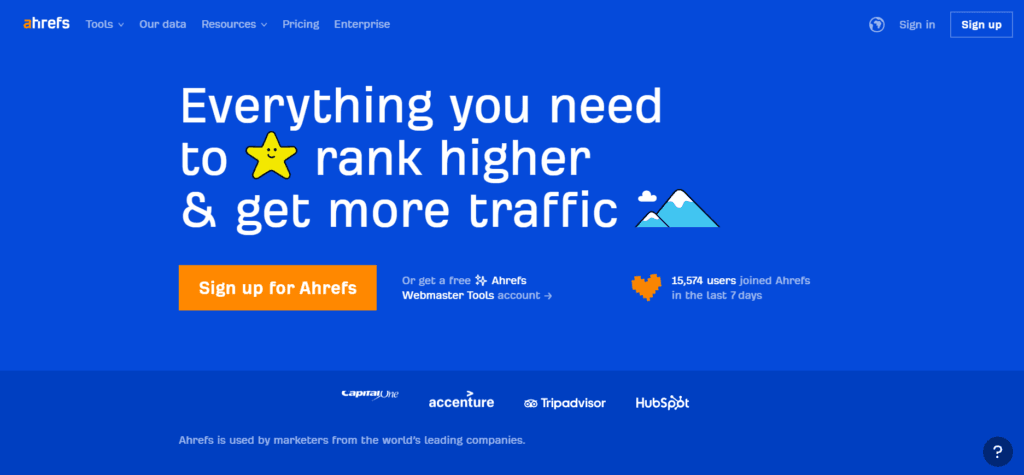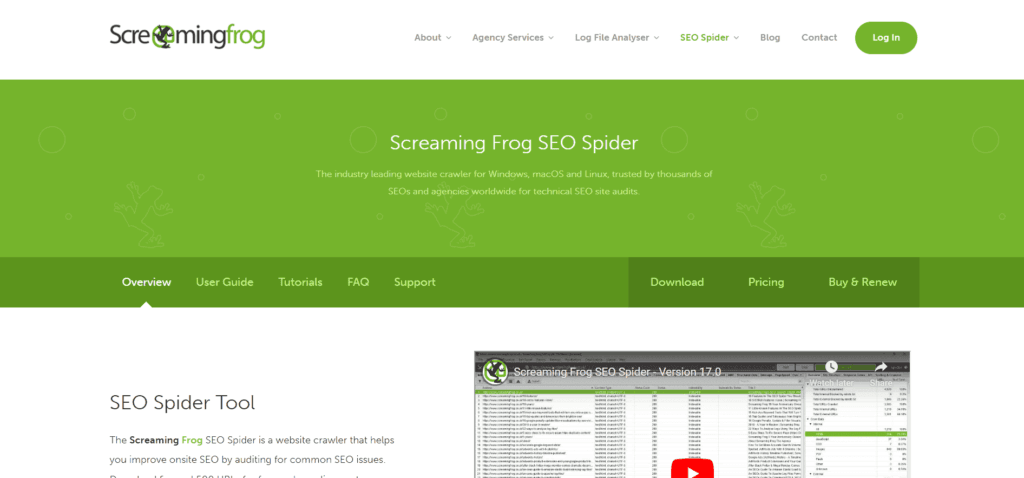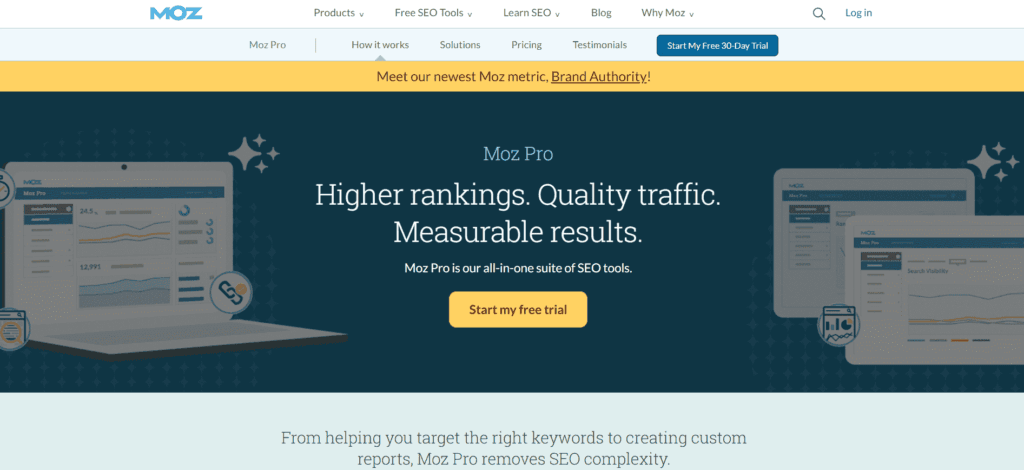In today’s globalized world, businesses no longer find themselves limited to a singular locale or market. The digital realm has dismantled barriers, providing enterprises the potential to tap into international audiences.
But with this vast opportunity comes the intricate challenge of visibility across diverse regions, languages, and cultures. Enter International SEO — your roadmap to global digital dominance. If you’re eyeing to get customers worldwide to your website, understanding and leveraging International SEO is paramount. Buckle up as we embark on this journey of digital globalization.

Understanding International SEO
Definition and Importance of International SEO
International SEO is the practice of optimizing your website for search engines, ensuring it’s accessible, relevant, and visible to a global audience across different regions and languages. Unlike traditional SEO, which mainly focuses on a single language or country, international SEO extends your digital reach, tailoring your online presence to cater to diverse cultural and linguistic audiences.
Why is this crucial? Consider this: Over 75% of online users search for products in their native language. By implementing International SEO, businesses can tap into new markets, foster trust with localized content, and potentially boost conversion rates. Additionally, it significantly improves user experience, catering to local nuances and preferences.
Key Considerations for International SEO: Language, Location, Culture
Language: It’s not just about direct translation. Keyword nuances differ between languages. For instance, while “smartphone” might be a popular keyword in English, its equivalent in another language might have a different popular variant.
Location: Google’s search results vary from one country to another. For brands, this means ensuring their website is recognized by search engines as the most relevant for users in a particular region.
Culture: From colors to symbols and idioms, cultural sensitivities play a pivotal role in content presentation and branding.
Case Study: Amazon’s International SEO Strategy
Amazon, the global e-commerce behemoth, offers a masterclass in International SEO. Its strategy involves dedicated country-specific domains (like amazon.co.uk for the UK or amazon.in for India), ensuring each regional site is tailored to the local audience’s language and shopping preferences. Beyond language, Amazon’s local sites reflect regional festivals, holidays, and even local bestsellers, offering a truly localized shopping experience.
Identifying International SEO Opportunities
Market Research and Competitive Analysis
Before diving into International SEO, it’s vital to identify which markets offer the most potential. This involves:
Analyzing Competitors: Who are the significant players in your niche in target countries? How well are they doing, and what gaps can you identify?
Market Potential: Does your product or service have demand in the target region? Tools like Google’s Market Finder can be instrumental here.
Analyzing Existing International Traffic
Examining your website’s current international traffic can offer valuable insights. Using tools like Google Analytics, identify:
Countries driving significant traffic.
User behavior from these countries — conversion rates, bounce rates, etc.
Popular pages or products for these audiences.
Case Study: How Spotify Identified New Markets for Expansion
Music streaming giant Spotify’s expansion wasn’t a shot in the dark. The company meticulously analyzed data from piracy websites to determine where illegal music downloads were rampant, indicating a demand for their service. By offering a legal alternative in these markets, Spotify not only tapped into an existing audience but also turned potential pirates into paying customers.

Implementing International SEO
Website Structure for International SEO: ccTLDs, Subdomains, Subdirectories
ccTLDs (Country Code Top-Level Domains): These are country-specific domain extensions like .uk for the UK, .fr for France. Using ccTLDs sends a strong signal to search engines about the targeted country, offering potential ranking advantages in that specific country.
Subdomains: For example, uk.example.com. Subdomains are a flexible way to host separate content for different regions or languages without needing new domain registrations.
Subdirectories: Example – example.com/uk/. This approach is cost-effective and concentrates domain authority as all regional content resides under one domain.
Case Study: ‘Apple’ and its Use of ccTLDs
Apple, with its global presence, employs a ccTLD strategy for international SEO. For instance, in the UK, it uses apple.com/uk/, ensuring users and search engines are aware of the targeted region. By employing ccTLDs, Apple provides a localized browsing experience, tailoring its products, pricing, and offers to the specific region.
Using Hreflang Tags for Language and Regional URLs
Hreflang tags are a technical solution for sites that have similar content in multiple languages. They tell search engines which language you are using on a specific page, ensuring that the content is served to the right audience.
Localizing Content: Translation vs. Transcreation
Translation: Directly converting content from one language to another.
Transcreation: Adapting the content while considering cultural nuances, ensuring the message’s intent, tone, and context remain consistent.
Case Study: ‘Netflix’ and its Local Content Strategy
Netflix isn’t just translating its platform; it’s transcreating experiences. Beyond offering subtitles, Netflix invests in regional content, understanding the local audience’s pulse. Shows like “Money Heist” (La Casa De Papel) from Spain or “Sacred Games” from India resonate globally yet remain deeply rooted in their local culture.
International Keyword Research and Optimization
Expanding internationally means understanding that keyword popularity, competition, and relevance can vary drastically between regions. Tools like SEMrush or Ahrefs can help identify keyword trends in specific countries.
Case Study: ‘ASOS’ and its Keyword Strategy for Different Markets
Online fashion giant ASOS tailors its keyword strategy for diverse markets. While “trousers” might be the term in the UK, in the US, “pants” holds sway. ASOS optimizes product listings based on these regional variations, ensuring visibility in each target market.

Technical SEO for International Websites
Importance of Load Speed and Mobile Optimization
In today’s fast-paced digital era, users across the globe have little patience for slow-loading websites. Page load speed, therefore, is more than just a technical benchmark; it’s crucial for retaining international users and ensuring a high-quality user experience. Google has long confirmed that site speed is a ranking factor, and with users spread across different regions with varying internet speeds, it’s vital to ensure pages load quickly regardless of a user’s location.
Mobile optimization is another pivotal factor in international SEO. With more users accessing the internet through mobile devices than desktops, ensuring a website is mobile-friendly is non-negotiable. The mobile version of a website should retain all the essential features of its desktop counterpart, be easy to navigate, and load quickly.
Case Study: ‘Booking.com’ and Its Mobile-First Approach
Booking.com, a global leader in online travel reservations, owes a significant part of its success to its mobile-first approach. Recognizing early on that a growing segment of its users were accessing their platform via smartphones, the company prioritized mobile optimization. This not only involved streamlining the mobile website but also developing a robust app that offers features tailored to on-the-go users, such as instant notifications. Their emphasis on mobile-first design has paid off, with increased engagement and conversions from users across different continents.
Implementing SSL for Secure Connections
As businesses expand internationally, they cater to customers from various cultures and regions, and ensuring a secure connection becomes paramount. Implementing SSL (Secure Socket Layer) on a website encrypts the data shared between the user’s browser and the server, fostering trust among visitors. Google has also recognized SSL as a ranking factor, making it indispensable for SEO. For international sites, this adds an extra layer of credibility, especially if financial transactions are involved.
Dealing with Duplicate Content Issues in Multi-Language Sites
One common hurdle in international SEO is the challenge posed by duplicate content on multi-language sites. When websites offer content in several languages, they run the risk of having pages with largely similar content, save for the language difference. This can confuse search engines. Using the “hreflang” tag can guide search engines about which language you’re using on a particular page, ensuring that the right content version appears for the right audience. It’s a way to tell Google, “This content is the same, but in a different language.”
Geo-Targeting with Google Search Console
Geo-targeting allows websites to target a particular geographic location. For businesses aiming for international expansion, it’s essential to ensure that users in a specific region get the version of the site most relevant to them. Google Search Console provides the option to set a target country for your website, which can guide Google’s geotargeting. By setting this, businesses can ensure that their content reaches the intended audience, improving both relevance and user experience.
As we delve deeper into the intricacies of technical SEO for international websites, it’s evident that a one-size-fits-all approach won’t suffice. Instead, businesses need to tailor their strategies to fit the unique challenges and opportunities presented by each regional market.

Content Plan for International SEO: How to Go About It
The expansion of a business onto an international platform is an exhilarating prospect, promising not just growth but a multi-cultural dimension to its narrative. However, there’s a twist in the plot – the global audience speaks in many voices, searches in myriad ways, and perceives your content through different lenses. And that’s where a well-strategized content plan for International SEO comes into play. Grasping the intricacies of this endeavor can truly make the difference between simply being present globally and truly engaging with a worldwide audience.
Understanding Cultural Nuances
The Art of Localization
Localization is more than just translating content; it’s about resonating with the local culture, ethos, and sentiments. Imagine celebrating Thanksgiving in a region that doesn’t recognize the holiday. Beyond alienating your audience, it creates a disconnect. Content should not merely be linguistically accurate but should strike a chord with local events, holidays, traditions, and even humor.
Diverse Consumer Behavior
Different regions can have varied reactions to a product or service due to their unique socio-economic dynamics. Understanding purchasing behavior, digital habits, and preferences can give clarity on how content should be presented. For instance, while one region might heavily rely on reviews and testimonials, another might prioritize product specifications or price comparisons.
SEO-Driven Content for Different Regions
Importance of Keyword Research
Keywords are the essence of SEO. However, direct translation of keywords can sometimes miss the mark. A phrase popular in the US might be searched differently in the UK or Australia. It’s imperative to do region-specific keyword research using tools that can provide insights about local search behavior. Delve deep into colloquial phrases or terminologies which might not be apparent initially but can drive significant traffic.
Localized Meta and Alt Tags
While your content might be spot on, missing out on meta descriptions or alt tags can take away from a fully optimized page. These seemingly minor elements are key to improving click-through rates from search engine results pages and should be crafted with as much attention as the main content.
The Magic of Multi-Lingual Content
Embracing the Native Tongue
Yes, English is a global language, but embracing the local language can drastically improve engagement. Websites that offer content in the native tongue see better dwell time, lower bounce rates, and higher conversions. This is because users feel more at ease and are likely to trust the authenticity of the information.
Professional Translations vs. Automated Tools
While tools like Google Translate can provide instant translations, relying on them for business content can be risky. Professional translation ensures the subtleties of language aren’t lost, and the content remains impactful. Automated tools can sometimes misinterpret phrases, leading to embarrassing or misleading content.
Tailored Content Formats for Diverse Audiences
Understanding Consumption Patterns
While written content is universally consumed, the preference for video, podcasts, or infographics might vary based on regions. Some audiences might prefer detailed blogs, while others lean towards quick video snippets. Being aware of these patterns can shape the content format strategy for different regions.
Mobile-First Approach for Certain Geographies
In regions like Southeast Asia or Africa, mobile penetration far exceeds desktop usage. This demands a mobile-first approach where content is optimized for mobile viewing, ensuring graphics load well, CTAs are easily clickable, and the content layout is scroll-friendly.
Regional Content Calendar
Every region has its unique set of holidays, events, or even shopping patterns. Black Friday might be a rage in the US, but Singles Day is what drives sales in China. Creating a content calendar that aligns with these regional nuances can ensure businesses remain relevant and timely.
Building Trust Through Content in New Markets
Content as the First Touchpoint
When entering new geographies, businesses often overlook the fact that their content serves as the first touchpoint. Before consumers decide to make a purchase, they engage with your brand’s content, seeking understanding and establishing trust. Content that is genuine, relatable, and transparent can immensely boost a brand’s credibility in unfamiliar terrains.
Localized Reviews and Testimonials
It’s human nature to trust a fellow customer’s word over a brand’s claim. Integrating local reviews and testimonials not only validates the brand’s claims but also resonates more with the local audience. This could involve collaborating with local influencers or encouraging user-generated content.
Leveraging Regional Search Engines and Platforms
Beyond Google: Embracing Local Giants
While Google is dominant globally, certain regions have their local champions. In Russia, it’s Yandex; in China, Baidu leads the way. Crafting content that’s optimized for these regional search engines is crucial. Each has its unique algorithm, and understanding these nuances can provide a competitive edge.
Local Forums and Community Engagement
Engaging on local platforms, forums, and community sites can provide valuable insights into the market’s needs and preferences. Answering questions on platforms like Quora or local equivalents helps in brand building and establishing authority in the domain.
The Role of AI and Machine Learning in International SEO
Predictive Analytics for Content Strategy
With the integration of artificial intelligence, businesses can now predict the kind of content that would engage most with a certain demographic or region. By analyzing search behavior, engagement rates, and even cultural trends, AI can assist in crafting a near-perfect content strategy tailored for specific international markets.
Chatbots for Seamless Customer Interaction
For international businesses, catering to customer queries in real-time across time zones can be challenging. Enter Chatbots: These AI-driven tools can not only answer queries but can do so in multiple languages, ensuring a seamless experience for the user. The key is to make these interactions feel as human and natural as possible.
Periodic Content Audits and Adaptability
Stay Relevant with Regular Audits
Markets evolve, and so do consumer behaviors. What worked a year ago might be obsolete now. Periodic content audits allow businesses to reassess their content’s relevance, ensuring they remain aligned with the market’s pulse. Tools that track engagement metrics can highlight what’s working and what needs revision.
Agility in Strategy: The Power to Pivot
One of the hallmarks of successful international brands is their ability to adapt. This doesn’t just apply to products or services but extends to content as well. Being agile in strategy means having the bandwidth to quickly pivot if certain content doesn’t resonate or if there’s a sudden shift in market dynamics.
Stepping onto the international stage is as challenging as it is rewarding. But in the digital age, where content acts as both an ambassador and a guide, businesses have the tools they need to make a lasting impact. Crafting a robust content plan for International SEO isn’t just about visibility; it’s about creating meaningful engagements, building trust, and fostering relationships that transcend borders.

Link Building for International SEO
As the digital landscape expands, the significance of international SEO can’t be overstated. At its core, international SEO isn’t just about translating your content—it’s about adapting your entire digital strategy to resonate with different regional audiences. A crucial component of this strategy is link building.
Importance of Local Backlinks for Each Market
In the realm of SEO, backlinks serve as endorsements, pointing search engines toward the relevance and authority of your website. But when it comes to international SEO, the geographical source of these backlinks plays a crucial role.
Local backlinks, or backlinks from websites within the targeted region, are of paramount importance. Acquiring a backlink from a prominent industry website in Spain, for example, is an SEO indicator that your content holds significance and relevance for the Spanish audience.
Imagine the impact when a French news portal links to your content. Such an endorsement would not only boost your site’s credibility among French readers but also signal to search engines like Google that your content holds authority within the French digital space.
Strategies for Building Local Backlinks:
Content Marketing: The first and foremost strategy is creating content that caters to the local audience’s interests and needs. The more tailored and region-specific your content, the more likely local websites will find value in linking to it.
Influencer Partnerships: Influencers hold immense sway in their respective regions. Partnering with them offers dual benefits: exposure to their local followers and potential backlinks from local domains.
Guest Posting on Local Sites: A tried-and-true method, guest posting allows you to create content for local websites. This not only taps into their audience base but also secures those all-important local backlinks.
Case Study: Airbnb’s Local PR Strategy
Airbnb’s success isn’t merely due to its disruptive business model—it’s also a testament to its astute digital strategies. One such strategy is their emphasis on local PR. In Tokyo, for instance, Airbnb collaborated with the local government, promoting the city’s tourism. This not only resulted in a surge of local listings on Airbnb but also earned them a plethora of valuable local backlinks. The outcome? A fortified SEO stance in the Japanese market.
Legal and Cultural Considerations in International SEO
Diving into international waters requires an understanding of more than just SEO best practices. It’s about navigating and respecting the legal and cultural nuances of each region.
Respecting Local Laws
With global expansion comes the responsibility to adhere to local laws. The European Union’s GDPR, which governs data protection and privacy, stands as a significant regulatory landmark. But beyond Europe, countries like Russia and China have stringent data localization laws. Adherence to these regulations isn’t just about legal compliance—it’s also about building trust with local users.
Cultural Sensitivities and Local Customs
A key aspect often overlooked in SEO strategies is cultural sensibility. Being culturally astute can make or break your brand’s reputation. Simple gestures, such as acknowledging a local festival or understanding regional sentiments, can bolster your brand’s image. Ignoring these can, at best, result in lost opportunities and, at worst, lead to public relations nightmares.
Case Study: Google’s Approach to Legal and Cultural Environments
Google’s journey offers invaluable lessons. In Europe, Google adapted its operations to respect the “Right to be Forgotten,” a byproduct of the GDPR. In contrast, in the Middle East and some Asian countries, Google refines its search results to mirror cultural preferences and norms, ensuring users find content that resonates with their values.
Tools and Resources for International SEO
To streamline your international SEO endeavors, leveraging the right tools is indispensable:
Tools for Keyword Research

#1 SEMrush
SEMrush provides data on keyword volume, competition, related keywords, and more. For businesses entering new markets, SEMrush provides insights into local search trends and competitive landscapes. However, pricing can be on the higher side, especially for small businesses. While its comprehensive features make it a favorite, it might be considered a bit complex for beginners.

#2 Ahrefs
Ahrefs is known for its expansive database, Ahrefs offers a keyword explorer feature that dives deep into search volumes, click metrics, and global search interest. It’s particularly beneficial for tracking how keywords perform in different countries. On the downside, some users find Ahrefs’ user interface a tad bit overwhelming, and like SEMrush, pricing might deter smaller entities.

#3 Ubersuggest
Created by marketing expert Neil Patel, Ubersuggest provides keyword insights, trend data, and competitive analysis. It’s a cost-effective solution for businesses venturing into international SEO. While it’s appreciated for its user-friendly interface, it may lack the depth of data seen in pricier tools. You can access a limited free version or upgrade to a paid plan starting at $29/month.

#4 Google Keyword Planner
Google Keyword Planner is a foundational tool in the toolkit of any SEO professional. Tailored for advertisers, it provides keyword suggestions, search volume, and cost estimates for AdWords campaigns. Its extensive database and integration with the Google ecosystem make it invaluable for understanding search behaviors. While it’s a free tool, accessing the most detailed data often requires an active Google Ads campaign.
Site Audit

#1 DeepCrawl
DeepCrawl is a powerful tool in this regard. By simulating how search engines crawl your website, DeepCrawl identifies technical issues that might hamper your international SEO efforts. Its robust reporting provides actionable insights. However, the wealth of data might be daunting for those new to SEO, and its pricing, based on the number of crawled pages, might not suit everyone.

#2 Screaming Frog
Screaming Frog is another name that resonates when we talk about site audits. Their SEO Spider tool is a downloadable marketing software that scours your website for potential issues – from broken links to missing meta tags. Given its depth, it’s surprisingly user-friendly. While it offers a free version, its limitations make the paid version almost essential for larger sites. However, the pricing is straightforward and offers good value.

#3 Moz Pro Site Crawl
Moz Pro Site Crawl is a comprehensive website auditing tool that dives deep into your site to find SEO issues affecting your international audience. By highlighting critical errors, warnings, and notices, it enables webmasters to optimize their sites effectively. The tool’s intuitive dashboard and actionable insights are major pros, ensuring a smooth user experience. However, pricing starts at $99 per month, making it a premium option for many businesses.

#4 Woorank
WooRank offers in-depth website reviews by analyzing various SEO factors to ensure your site is ready for global audiences. Key features include its ability to provide instant website reviews, track keywords, and analyze website traffic. One of its significant advantages is its user-friendly interface coupled with actionable insights. Pricing starts at $59.99 per month, but the wealth of data provided can justify the cost.
Backlink Analysis

#1 Majestic
In the world of SEO, backlinks serve as endorsements. Majestic stands tall when analyzing backlinks. With its extensive link database, businesses can scrutinize their link profiles and that of competitors, aiding in crafting link-building strategies for different regions. A unique feature of Majestic is its Trust Flow and Citation Flow metrics, offering insights into link quality. However, there’s a learning curve, and its interface might seem dated to some. Pricing, while competitive, can escalate if you need more advanced features.

#2 Ahrefs
Ahrefs, apart from its keyword prowess, is also revered for backlink analysis. It offers a visual representation of a site’s backlink profile and provides data on anchor text distribution, domain ratings, and more. As with its keyword tool, the richness can be both a boon and a bane. The depth of data is excellent, but beginners might need some time to navigate the tool effectively.

#3 LinkResearchTools
Diving deep into the world of backlinks, LinkResearchTools provides a suite of tools tailored to backlink discovery, monitoring, and analysis. Its unique selling point is the real-time link protection it offers, alerting users to potentially harmful backlinks that could lead to penalties. The tool’s comprehensive link data is its standout feature. Pricing is on the higher end, starting at €249 per month, making it best suited for large businesses or agencies.

#4 Moz Link Explorer
Moz Link Explorer is a robust tool that offers a detailed look into your website’s backlink profile. It not only shows the links pointing to your site but also evaluates their quality, ensuring you’re informed about potentially harmful links. Its Domain Authority (DA) metric is widely recognized in the industry as a reliable measure of site credibility. Pricing is bundled with Moz Pro, starting at $99 per month, which includes a suite of other SEO tools.
Local Ranking

#1 BrightLocal
When targeting multiple countries or regions, local ranking becomes paramount. Tools like BrightLocal come to the rescue here. Specifically designed to track local SEO performance, it monitors search rankings based on specific locations, providing insights into how businesses are faring in local search landscapes. Its features are robust, from local search audits to competitor analysis. The pricing is tiered, making it accessible for different business sizes. However, its focus on local might make it less suitable for businesses seeking broader insights.

#2 Moz Local
Another contender is Moz Local, designed to enhance local visibility. It not only tracks rankings but also helps businesses maintain consistent listings across various platforms, crucial for local SEO. The tool’s simplicity is its strength, making it suitable for both novices and pros. While pricing is transparent, some users might wish for more features at its price point.

#3 GeoRanker
GeoRanker is specialized for businesses wanting to analyze their local search rankings in different geographies. It offers heatmaps, rank tracking, and competitive analysis. Its strength lies in providing real-time local SERP rankings, enabling businesses to tweak strategies instantly. The tool’s pricing starts at $99 per month, making it an affordable solution for businesses of all sizes focused on local search.

#4 Whitespark Local Citation Finder
GeoRanker is specialized for businesses wanting to analyze their local search rankings in different geographies. It offers heatmaps, rank tracking, and competitive analysis. Its strength lies in providing real-time local SERP rankings, enabling businesses to tweak strategies instantly. The tool’s pricing starts at $99 per month, making it an affordable solution for businesses of all sizes focused on local search.
Wrapping it up: Navigating the Global Digital Landscape with International SEO
The digital age has transformed the world into a global village, bridging gaps and creating opportunities beyond borders. Businesses are no longer confined to local audiences; they can aspire and cater to consumers from different continents, cultures, and languages. However, with these expansive opportunities come challenges, and that’s where the strategic importance of international SEO enters the picture.
We’ve delved deep into the realms of international SEO, exploring its intricate facets, from understanding its significance and identifying global opportunities to implementing technical strategies tailored for different regions.
So, as you venture out, equipped with the insights from this guide, into the vast realm of international SEO, keep one thing in mind: Every region, every culture, and every individual is a unique story waiting to connect with yours. Make it count.
Read Next





















